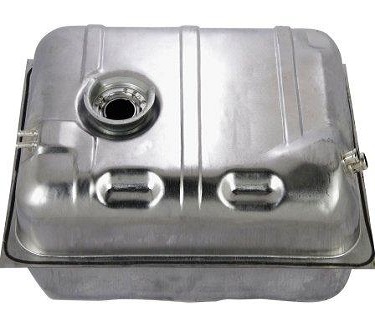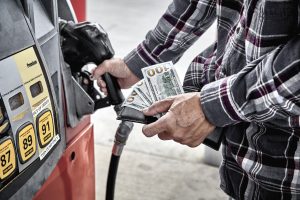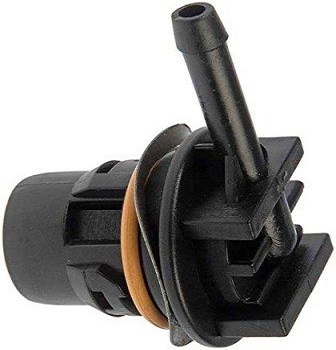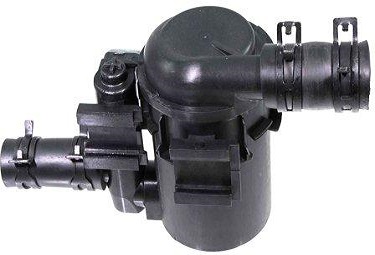
Unfortunately, common car gas tank problems are exactly that. We expect that our gas tanks will behave themselves and happily accept the fuel we try to put into it. However, sometimes it puts up a fight and doesn’t want to accept that fuel. This is the type of situation where the pump nozzle continually turns off when you’re trying to fill the tank. We also think our gas tank should store that fuel without any inconvenience to us or the passengers of the vehicle. This is a reasonable expectation and remains the case unless a problem exists.
Despite our wishes, sometimes our car gas tank allows fuel vapor to escape inside the automobile. In this situation passengers complain about a raw fuel smell and you might set a fuel vapor leak code. This happens after filling up and maybe even topping off the gas tank at the pumping station. It’s nice to squeeze all of the fuel that you can into the automobile in an attempt to increase the range. With that said, it’s not a good idea to leave no airspace inside the fuel tank. It’s even a worse idea to fill the tank to the very top and then fill the fuel filler hose. In this brief article we’ll talk about all of these common car gas tank problems. In addition, we’ll talk about diagnosis and repair of these situations when a good car gas tank goes bad.
Car Gas Tank Won’t Accept Fuel
 When you pull up at the gas station, you should be able to insert the fuel pumping nozzle and hold it wide open until tank becomes completely filled. The shape of the gas tank allows some fuel to back up into the fuel filler hose to shut the nozzle off automatically. The fuel then settles back in the tank leaving a small air gap. This is how it’s supposed to go when you arrive at the gas station.
When you pull up at the gas station, you should be able to insert the fuel pumping nozzle and hold it wide open until tank becomes completely filled. The shape of the gas tank allows some fuel to back up into the fuel filler hose to shut the nozzle off automatically. The fuel then settles back in the tank leaving a small air gap. This is how it’s supposed to go when you arrive at the gas station.
Unfortunately, it doesn’t always turn out that simple. If you pull the handle and start filling the tank and it continually turns off and requires restarting, you have a car gas tank problem. In order to allow the liquid fuel to flow into the tank the air inside needs venting. Car manufacturers install a complete fuel vapor system to handle the filling and venting of air from the tank.
The major components include a vent valve on the top side of the fuel tank. A vent hose connects to this valve and sends the fumes to the vapor canister. Car makers usually mount them in the engine compartment. However, on some automobiles the vapor canister is mounted near the fuel tank. If the vent valve malfunctions or the vent hose clogs air becomes trapped in the tank. Without the proper venting of this vapor the liquid starts to back up into the fuel filler hose. This then turns off the pump because the gas station thinks the car gas tank is already full.
Fixing the Car Gas Tank Vent System

When you’re car won’t accept fuel, how often the pump shuts off becomes a clue into how serious the problem is. If it turns off three or four times when filling an empty tank the vent is working. With that said, it’s not working efficiently. This points to a partial clog. If the fuel tank refuses to accept more than a gallon of gas at a time this means a malfunctioning vent system. Or the vent hoses completely clogged or kinked.
When you have this common car gas tank problem the first item to check is the vent hose. This becomes especially true in the scenario where the fuel pump turns off three or four times indicating a partially clogged vent hose. You start by locating your charcoal canister. The Easiest way to find out the component location is to gain access to a professional service manual. If you take this step, not only will you find a fuel system diagnostic tree chart to solve the problem, you’ll also find a detailed diagram of component locations.
Some species of spiders love the smell of fuel vapors. They work their way down inside the vent hoses and build nests. These nests partially clog the vent hose and cause the situation described above. In addition, a stuck or inoperative fuel tank vent also causes a stubborn to fill fuel tank. In this situation, lowering the gas tank down to replace the fuel vent becomes necessary.
Why Does My Car Stink like Gas Inside

A lot of motorists complain about a raw fuel smell inside of the automobile. Keep in mind that a small amount of gas puts off a major odor that lasts a long time. Because gasoline remains a thin weight petroleum product, it sticks to surfaces and evaporates slowly. Therefore, the most common cause of a fuel odor would fall into the fuel leak category.
If you’re the kind of motorist that likes to top the tank off at the fuel pump, you’ll find yourself more susceptible to this problem. When you fill up the fuel filler hose you can get some seepage around the hose clamps that attach it to the car gas tank. Once you get a few droplets of raw gas on the top of the tank, these vapors tend to rise and find their way into the passenger’s compartment.
Another possibility of having a fuel smell inside the car becomes a fuel tank vent that’s not closing properly. The gas tank vent needs to open when you’re filling the tank to allow the air to escape. When you stop filling the tank this vent should close completely and seal the vapors inside the tank. With that said, these are usually cheap plastic components. As we have learned, when the car manufacturer attempts to save a few pennies per car, they can get themselves into a situation where they’re putting troublesome parts on our automobile. I have seen some fuel tank vents fall into this category.




